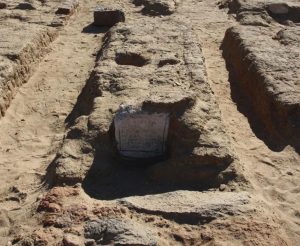Archaeologists excavated over 80 graves from a Medieval cemetery in al-Ghazali, north Sudan. The burials belong to Christian monks that lived 1500 years ago in the region.

Al-Ghazali is one of the largest known Medieval sacral complexes from Nubia located outside the Nile valley. It is located in the Wadi Abu Dorn valley, through which once the most busy trade route in north-eastern Africa ran. Previous archaeological research done by Polish archaeologists from the Centre of Mediterranean Archaeology of the University of Warsaw focused in the area of the Medieval monastery that functioned between 7th and 12th centuries. According to the researchers, the cemetery is unique due to presence of intact grave stones and good state of preservation of the human remains within the graves.

Archaeologists were able to study over 80 graves at the cemetery. Most of the burials were covered with a rectangular structure made of stones, filled with dirt and gravel, but some covered with dried or firebricks are also known. The graveyard also produced a second largest known collection of inscribed tombstones from Medieval Nubia. According to the researchers, they form a very important group of written sources from the Christian kingdoms in Sudan.

The burials themselves were typically Christian, as the researchers state. The individuals were wrapped in shrouds and places directly on the ground with the heads pointed toward west. The heads were additionally supported by two bricks or stones places by the sides, which were then covered with one or two more bricks. Anthropological research revealed that 95% of the individuals were male aged between 20-50 years old at the time of death. They were well fed and their health condition was overall good. The research will now focus on determining the monks’ places of origin, as there is a possibility that they were either from Egypt or were indigenous Nubians.
(after Nauka w Polsce & Joanna Ciesielska)